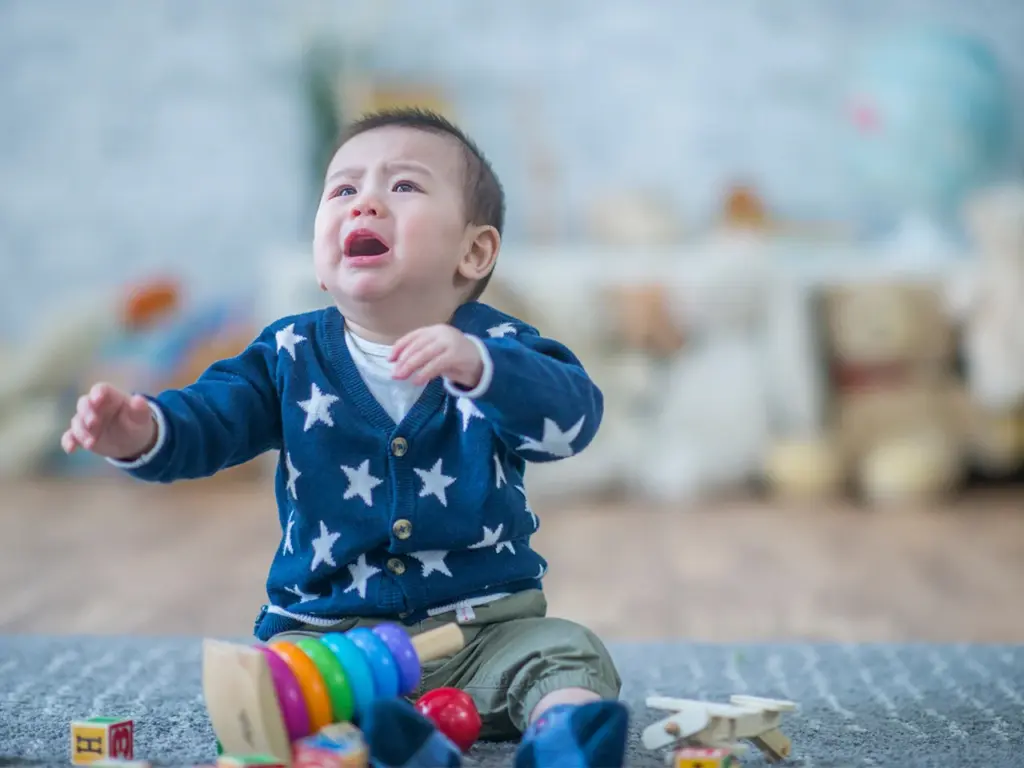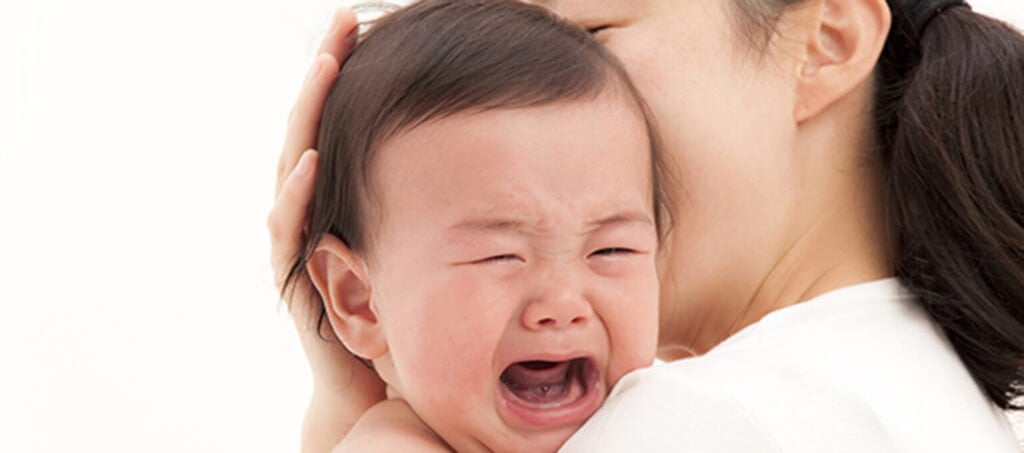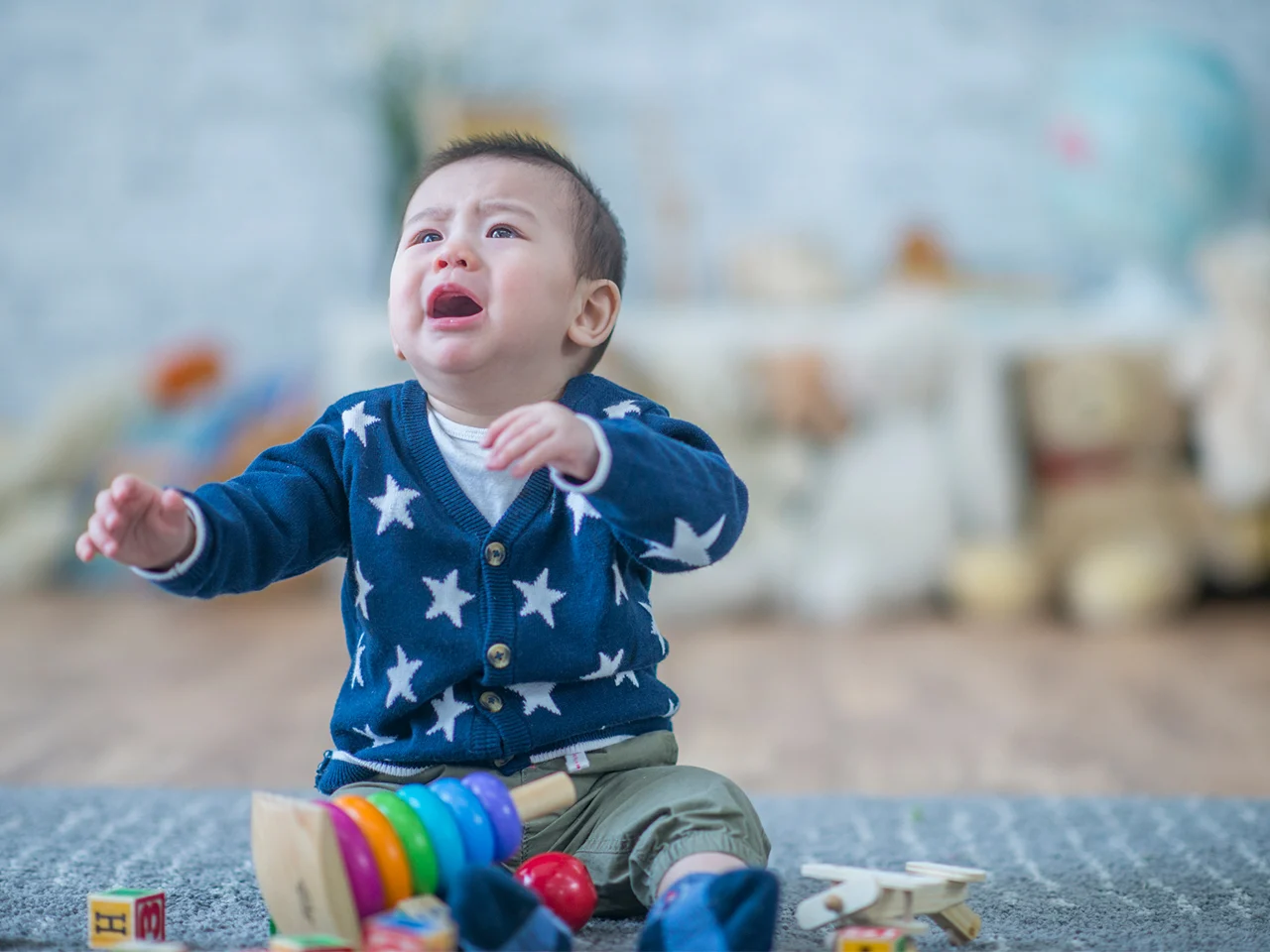Definition of Separation Anxiety Separation anxiety is a common and natural phase of development in babies, typically occurring between 6 and 18 months of age. It is characterized by distress and anxiety when a baby is separated from their primary caregiver, usually a parent.
Importance of Addressing Separation Anxiety Understanding and addressing separation anxiety is crucial for both the baby’s emotional development and the well-being of the family. By recognizing the signs and implementing effective strategies, parents can help their babies navigate this challenging phase with more ease and confidence.
Overview of the Article This article explores the multifaceted aspects of separation anxiety, including its causes, impacts, and strategies to manage it. It aims to provide parents and caregivers with a comprehensive guide to understanding and addressing separation anxiety in their babies.
Understanding Separation Anxiety
What is Separation Anxiety? Separation anxiety is an emotional state where a baby experiences fear and distress when separated from their primary caregiver. This response is a natural part of development and indicates a healthy attachment to the caregiver.
Developmental Timeline of Separation Anxiety Separation anxiety typically begins around 6 months of age, peaks between 10 to 18 months, and gradually decreases as the child grows older. However, the exact timing can vary depending on the child’s individual temperament and experiences.
Common Signs and Symptoms Signs of separation anxiety include crying, clinginess, and tantrums when a caregiver leaves. Babies may also show physical symptoms like stomachaches or changes in sleep patterns. Recognizing these signs early can help parents address the anxiety more effectively.
The Psychology Behind Separation Anxiety
Attachment Theory Attachment theory explains the deep emotional bond that develops between a child and their primary caregiver. A secure attachment provides a sense of safety and security, which is essential for healthy emotional development.
The Role of Secure Attachment A secure attachment forms the foundation for a child’s ability to explore the world confidently. It ensures that the child feels safe to venture out, knowing that they can return to their caregiver for comfort and reassurance.
Emotional Development in Babies Emotional development in babies involves learning to manage and express emotions. Separation anxiety is a part of this process, as babies learn to cope with feelings of separation and develop resilience.
Causes of Separation Anxiety
Developmental Factors Separation anxiety is a normal part of development. As babies grow, they begin to understand that their caregiver can leave and may not always be present, which can trigger anxiety.
Environmental Triggers Changes in the environment, such as starting daycare, moving to a new home, or the arrival of a new sibling, can exacerbate separation anxiety. These changes disrupt the baby’s sense of security and predictability.
Temperamental Influences A baby’s temperament also plays a role in the intensity of separation anxiety. Some babies are naturally more sensitive and may experience stronger reactions to separation compared to others.

Impact of Separation Anxiety on Babies
Emotional Impact Separation anxiety can cause significant emotional distress for babies. They may feel insecure, fearful, and overly dependent on their caregiver for comfort and reassurance.
Behavioral Impact Behaviorally, separation anxiety can lead to clinginess, tantrums, and reluctance to engage in independent activities. These behaviors can be challenging for both the baby and the caregiver.
Long-term Consequences If not addressed, severe separation anxiety can lead to long-term issues such as difficulty forming relationships, low self-esteem, and ongoing anxiety disorders. Early intervention is key to mitigating these potential outcomes.
Recognizing Separation Anxiety in Babies
Behavioral Cues Behavioral cues of separation anxiety include excessive crying, clinginess, and resistance to being left with other caregivers. Babies may also show a strong preference for the primary caregiver and become upset when left alone.
Emotional Reactions Emotionally, babies with separation anxiety may appear distressed, anxious, and inconsolable when separated from their caregiver. They may also display signs of frustration and anger.
Physical Symptoms Physical symptoms of separation anxiety can include changes in sleep patterns, loss of appetite, and somatic complaints such as stomachaches. These symptoms indicate the profound impact of anxiety on the baby’s well-being.
Common Myths About Separation Anxiety
Myth vs. Reality There are many myths surrounding separation anxiety, such as the belief that it is a sign of weakness or poor parenting. In reality, separation anxiety is a normal and healthy part of development.
Debunking Common Misconceptions Misconceptions include the idea that babies should be left to “cry it out” to overcome separation anxiety. However, research shows that responding to a baby’s needs with sensitivity and care is more effective in building security.
Understanding the Facts Understanding the facts about separation anxiety helps parents approach the issue with empathy and informed strategies, leading to better outcomes for both the baby and the family.
Preventing Separation Anxiety
Early Interventions Early interventions, such as establishing predictable routines and gradually introducing brief separations, can help prevent severe separation anxiety. These practices help babies feel secure and trust that their caregiver will return.
Establishing Routines Consistent routines provide a sense of stability and predictability, which is comforting for babies. Regular feeding, sleeping, and play schedules help reduce anxiety by creating a familiar structure.
Gradual Separation Techniques Gradual separation techniques involve slowly increasing the duration and frequency of separations, allowing the baby to adjust at their own pace. This approach builds the baby’s confidence and reduces anxiety.
Strategies to Cope with Separation Anxiety
Consistent Routines Maintaining consistent daily routines helps babies feel secure and reduces the likelihood of separation anxiety. Predictable schedules for feeding, sleeping, and playtime create a stable environment.
Comfort Objects Providing comfort objects, such as a favorite blanket or toy, can help soothe babies during separations. These objects offer a sense of familiarity and security.
Positive Reinforcement Using positive reinforcement, such as praise and rewards, encourages babies to cope with separations. Celebrating small successes helps build their confidence and resilience.
Creating a Secure Environment
Safe and Comfortable Spaces Creating a safe and comfortable environment is essential for reducing separation anxiety. Ensure that the baby’s surroundings are familiar, childproofed, and conducive to play and exploration.
Predictable Routines Establishing predictable routines helps babies feel secure and reduces anxiety. Regular schedules for meals, naps, and playtime create a sense of stability and trust.
Familiar Objects Surrounding babies with familiar objects, such as favorite toys and blankets, provides comfort and reassurance during times of separation.
Parental Roles in Managing Separation Anxiety
Being Present and Available Parents play a crucial role in managing separation anxiety by being present and available for their baby. Providing consistent love and attention helps build a secure attachment.
Encouraging Independence Encouraging independence by allowing babies to explore and play on their own helps them develop confidence and reduces reliance on the caregiver.
Modeling Calm Behavior Modeling calm and composed behavior during separations reassures babies that everything is okay. Parents should remain calm and positive, even if the baby is upset.
Developing Independence in Babies
Encouraging Self-Soothing Encouraging self-soothing techniques, such as thumb sucking or holding a comfort object, helps babies manage their anxiety and build independence.
Gradual Introduction to New Caregivers Gradually introducing new caregivers and allowing the baby to get comfortable with them over time reduces anxiety and fosters trust.
Building Confidence Building a baby’s confidence through positive reinforcement and celebrating small achievements helps them feel more secure and less anxious during separations.
Utilizing Transitional Objects
The Role of Comfort Objects Comfort objects, such as blankets or stuffed animals, play a crucial role in soothing babies during separations. They provide a sense of security and continuity.
Choosing Appropriate Transitional Objects Choosing appropriate transitional objects that are safe, durable, and comforting is important. Objects with familiar scents or textures can be particularly soothing.
Integrating Transitional Objects into Routines Integrating comfort objects into daily routines, such as nap and bedtime, helps babies associate them with security and comfort.
Dealing with Separation Anxiety During Transitions
Starting Daycare or Preschool Starting daycare or preschool can be a major source of separation anxiety. Preparing the baby by visiting the new environment and introducing them to caregivers can ease the transition.
Moving to a New Home Moving to a new home can disrupt a baby’s sense of security. Maintaining familiar routines and bringing comfort objects can help them adjust to the new environment.
Changes in Family Dynamics Changes in family dynamics, such as the arrival of a new sibling or changes in parental availability, can trigger separation anxiety. Ensuring that the baby receives consistent attention and reassurance is key.

Separation Anxiety at Different Ages
Infants (0-12 months) Infants may show signs of separation anxiety through crying, clinginess, and distress when the caregiver leaves. Establishing routines and providing comfort objects can help soothe them.
Toddlers (1-3 years) Toddlers may display separation anxiety by refusing to be left alone and seeking constant reassurance. Gradual separation techniques and encouraging independence are effective strategies.
Preschoolers (3-5 years) Preschoolers may experience separation anxiety when starting school or new activities. Preparing them in advance and creating a positive association with the new environment can help reduce anxiety.
Nighttime Separation Anxiety
Bedtime Routines Establishing a calming bedtime routine helps reduce nighttime separation anxiety. Activities such as reading, singing, or a warm bath can create a sense of security.
Addressing Night Wakings Responding to night wakings with a consistent and soothing approach helps babies feel reassured and reduces nighttime anxiety.
Co-sleeping Considerations Co-sleeping can be a temporary solution for severe nighttime separation anxiety, but it’s important to consider safety and long-term independence goals.
Travel and Separation Anxiety
Preparing for Travel Preparing for travel by maintaining familiar routines and bringing comfort objects helps reduce travel-related separation anxiety.
Maintaining Routines on the Go Maintaining regular routines, such as nap and meal times, while traveling provides a sense of stability and comfort for the baby.
Comfort Strategies While Traveling Using comfort strategies, such as familiar toys and soothing activities, helps babies feel secure and reduces anxiety during travel.
Professional Help and Resources
When to Seek Professional Help If separation anxiety becomes severe or persistent, it may be necessary to seek professional help. Signs that indicate the need for professional intervention include extreme distress, withdrawal, and refusal to engage in daily activities.
Types of Professionals to Consult Professionals who can help with separation anxiety include pediatricians, child psychologists, and family therapists. These experts can provide tailored strategies and support.
Available Resources and Support Groups There are numerous resources and support groups available for parents dealing with separation anxiety in their babies. These include online forums, local parent groups, and educational workshops.
Case Studies and Real-Life Examples
Success Stories Sharing success stories of parents who have effectively managed separation anxiety can provide inspiration and practical tips for others.
Lessons Learned from Other Parents Learning from the experiences of other parents can offer valuable insights and strategies for dealing with separation anxiety.
Expert Opinions Expert opinions from child development specialists can provide evidence-based guidance and reassurance for parents navigating separation anxiety.
The Role of Caregivers and Extended Family
Involving Grandparents and Relatives Involving grandparents and other relatives in the baby’s care can provide additional support and help the baby feel secure with multiple caregivers.
Consistency Among Caregivers Ensuring consistency among caregivers in terms of routines and responses to separation anxiety helps the baby feel more secure and reduces anxiety.
Supporting the Primary Caregiver Supporting the primary caregiver by providing breaks and sharing responsibilities can help reduce stress and improve the overall family dynamic.
Addressing Parental Anxiety
Recognizing Parental Anxiety Parents may also experience anxiety related to separations. Recognizing and addressing this anxiety is important for the well-being of both the parent and the baby.
Coping Strategies for Parents Coping strategies for parents include seeking support from other parents, practicing self-care, and using relaxation techniques to manage stress.
The Connection Between Parental and Child Anxiety There is a strong connection between parental and child anxiety. Parents who manage their own anxiety effectively can help reduce their baby’s separation anxiety.
Cultural Perspectives on Separation Anxiety
Cultural Variations in Parenting Practices Different cultures have varying approaches to parenting and separation anxiety. Understanding these differences can provide new perspectives and strategies.
Global Approaches to Separation Anxiety Exploring global approaches to managing separation anxiety can offer valuable insights and alternative methods.
Lessons from Different Cultures Learning from different cultures can help parents find new ways to support their baby through separation anxiety, incorporating diverse practices and techniques.
Balancing Work and Separation Anxiety
Strategies for Working Parents Working parents can balance work and separation anxiety by establishing consistent routines, using reliable caregivers, and maintaining open communication with their baby.
Communicating with Caregivers Effective communication with caregivers about the baby’s needs and routines helps ensure a smooth transition and reduces separation anxiety.
Flexible Work Arrangements Exploring flexible work arrangements, such as remote work or adjusted schedules, can help parents be more available during critical times for their baby.
Technology and Separation Anxiety
Video Calls and Virtual Presence Using video calls to stay connected with the baby during separations can provide reassurance and maintain a sense of presence.
Monitoring Tools and Gadgets Monitoring tools, such as baby monitors and cameras, can help parents keep an eye on their baby and feel more connected during separations.
Pros and Cons of Technology Use While technology can offer benefits, it’s important to balance its use with direct, personal interactions to ensure a healthy attachment and reduce dependence on gadgets.
.










